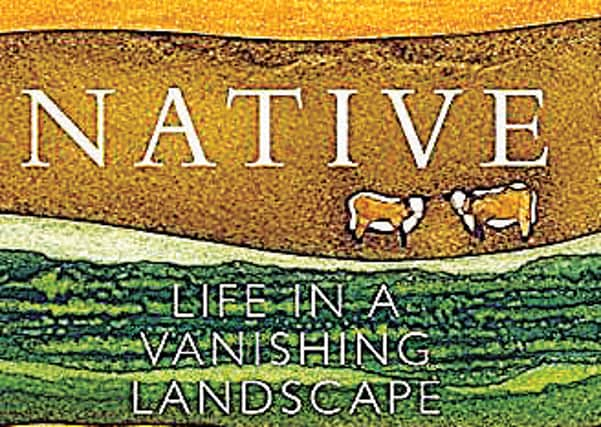Book review: Native - Life in a Vanishing Landscape, by Patrick Laurie


This sounds like an ideological choice, and Laurie is certainly aware of the increasingly intense public debate about land use, in Scotland and elsewhere, that might tend to support his decision; he is involved in various conservation projects, and has a special passion both for old-style, slow-growing Galloway rigg cattle, and for the curlew, a farmland bird gradually driven out by the rapid growth of commercial forestry in Galloway.
Yet what makes Laurie’s book so remarkable, and so profoundly enjoyable to read, is that for him, many of these decisions seem almost instinctive. He follows his heart, in choosing his patch of land, the breed of cattle he loves, and the presence of curlews as a measure of the health of the landscape; and often, it seems as though the Galloway land itself, on which his family has lived for centuries, is breathing and speaking through him, sometimes driving his prose to extraordinary heights and depths of rich, sweet lyricism. At some moments it’s hard not to think of Lewis Grassic Gibbon’s heroine Chris Guthrie in Sunset Song; and his extraordinary power to conjure up in words her passionate love for the land of the Mearns, and its old farming ways.
Advertisement
Hide AdLaurie’s book is divided into 14 chapters, marking the 12 months of a year, plus the solstices of winter and summer; and it weaves into those chapters not only a practical account of the working of the farm, and those extraordinary moments of poetry and communion, but also much reflection on the history of a region that Laurie describes as “forgotten,” and also the story of the profound personal sadness of childlessness, as experienced by Laurie and his wife in a farming life built around cycles of successful breeding. For all that, the book sometimes seems just a shade repetitive, as if it could have made its mark even more powerfully at a slightly shorter length.
Yet its importance is huge, setting down a vital marker in the 21st century debate about how we use and abuse the land. It reflects both the hardness and the joy of a life that nurtures the land for the long term, rather than simply raping it for profit; it warns us that even the best-intentioned policies, determined by faraway governments, can do great damage if they ignore the hard-won knowledge of past generations. Laurie’s book is subtitled Life In A Vanishing Landscape, but in truth its subject is much more complex than that. It’s more like a story of life in a changing landscape; of the unintended consequences of change and development, of the complexity of the task of restoration, and of the truth that no landscape inhabited by humans is ever untouched or unshaped by our hands. The question is whether we care enough about that impact; and whether – like Patrick Laurie – we can learn to listen with humility and love to what the land itself is telling us, before it grows too late.
Native - Life in a Vanishing Landscape, by Patrick Laurie, Birlinn, 246pp, £14.99
Comments
Want to join the conversation? Please or to comment on this article.